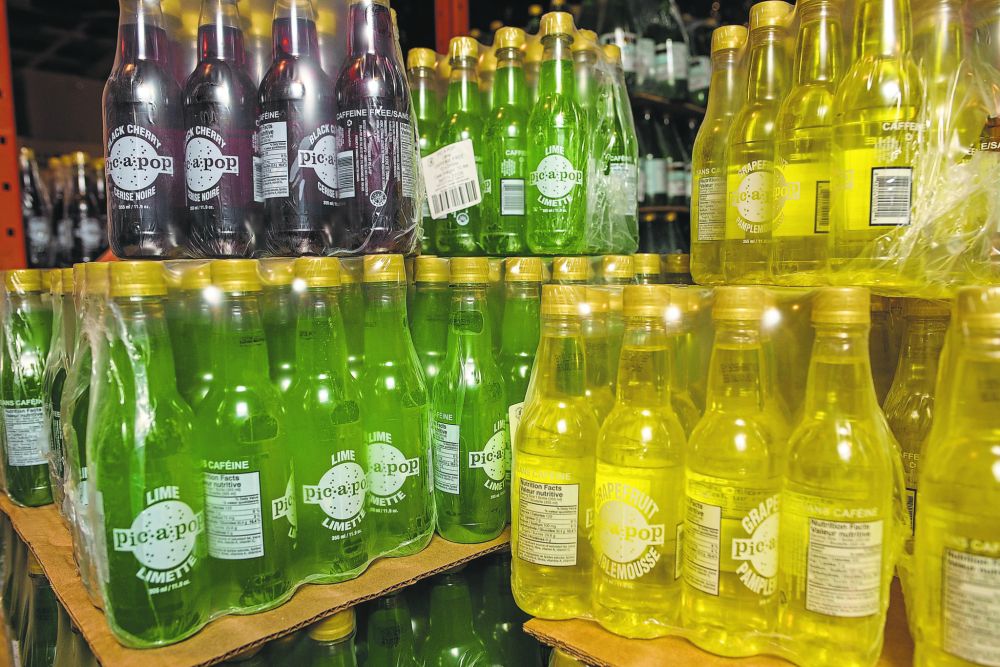Sentimental soda returning to glass
Advertisement
Hey there, time traveller!
This article was published 22/05/2022 (998 days ago), so information in it may no longer be current.
Soon, Pic-a-Pop will have a bit more pop to it.
Those who delight in the fizzy, Manitoba-made soda will once again feel the satisfaction of popping the top off a glass bottle of their favourite flavour rather than twisting a lid off a plastic bottle.
Canadian Gold Beverages, the Marchand-based makers and bottlers of the renowned beverage, announced May 1 they will be switching to glass from their usual P.E.T plastic material owing to a rising cost of supplies and availability of raw materials.

Peter de Jong, president of Canadian Gold, said the decision also came, in part, from a resurgence in desire for products in glass bottles.
“Plus, it tastes better in a glass bottle,” he mused.
Canadian Gold produces their own line of soda, water and, since 2014, Pic-a-Pop when they acquired the brand.
After taking over Pic-a-Pop de Jong had every intention of bottling the orange and blue razzberry — de Jong’s favourite flavour — sodas in glass bottles but the price quickly outweighed the benefit of the classic look. Plastic bottles with twist off lids soon replaced the retro packaging.
These days, environmental conscientiousness has put glass back in the spotlight.
“People are really thinking before they purchase something,” de Jong said.
“Compared to 10-15 years ago people really do a search.”
Pic-a-Pop originated in 1971 by Winnipegger Helmut Sass. After decades of success the staple soda fizzled away when the bottling plant closed in 1997.
Then, after a brief revival in 2005 de Jong bought the brand and brought it back to the frontal lobe of Manitoba’s memory.
“Like any other things to restart, it was a pleasant experience. Now 10 years later we are still getting good feedback and the sales are still strong,” he said.
Since his acquisition, he’s lowered the amount of sugar in Pic-a-Pop while maintaining it’s classic recipe which uses real cane sugar and Canadian Gold’s world-famous alkaline water. De Jong also introduced new flavours to the line up like Canadian maple and tahiti fruit.
Now that the 11 flavours will be back in glass bottles which Canadian Gold will source from Sri Lanka, de Jong is already thinking about his next move for the brand.
In the next few years the plant aims to eradicate sugar from the drink. To some, it may sound like the end of Pic-a-Pop’s classic taste, but de Jong assures nothing about the nostalgic soda will change.
“I think it really tastes good,” he said. “This combination will work even better in the future.”
After depleting their inventory of plastic, glass bottles will become the norm within six weeks. Canadian Gold will continue to produce their four and five-litre jugs of water in plastic.
